Chef's Choice Chef'sChoice 316 User manual
- Category
- Knife sharpeners
- Type
- User manual
This manual is also suitable for

Modell 316
instructions
Sharpener For Asian Knives
Read these instructions before use.
It is essential that you follow these
instructions to achieve optimum results.
© 2014 EdgeCraft Corp.

Important SafeguardS
When using electrical appliances, basic safety precautions should always be
followed including the following:
1. Read all instructions. Every user should read this manual.
2. To protect against electrical hazards, do not immerse the Chef’sChoice
®
Model 316 in
water or other liquid.
3. Make sure only clean knife blades are inserted in the Model 316.
4. Disconnect the appliance from its power source when not in use, before cleaning,
during service and when replacing parts.
5. Avoid contacting moving parts.
6. Do not operate any appliance with a damaged cord or plug or after the appliance
malfunctions, or is dropped or damaged in any manner.
U.S. customers: You can return your sharpener to EdgeCraft’s factory for service where
the cost of repair or electrical or mechanical adjustment can be estimated. When the
electrical cord on this appliance is damaged, it must be replaced by the Chef’sChoice
distributor or other qualified service to avoid the danger of electrical shock.
Outside U.S.: Please return your sharpener to your local distributor where the cost of repair
or electrical or mechanical adjustment can be estimated. If the supply cord of this appliance
is damaged, it must be replaced by a repair facility appointed by the manufacturer because
special tools are required. Please consult your Chef’sChoice distributor.
7. CAUTION! This appliance may be fitted with a polarized plug (one blade is wider than
the other). To reduce the risk of electric shock, this plug will fit in a polarized outlet only
one way. If the plug does not fit fully in the outlet, reverse the plug. If it still does not fit,
contact a qualified electrician. Do not modify the plug in anyway.
8. The use of attachments not recommended or sold by EdgeCraft Corporation may cause
fire, electric shock or injury.
9. The Chef’sChoice
®
Model 316 is designed to sharpen Asian style knives. Do not attempt
to sharpen scissors, ax blades or any blade that does not fit freely in the slots.
10. Do not let the cord hang over edge of table or counter or touch hot surfaces.
11. When in the “ON” position (Red flash on switch is exposed when “on”), the
Chef’sChoice
®
sharpener should always be on a stable countertop or table.
12. WARNING: KNIVES PROPERLY SHARPENED ON YOUR CHEF’SCHOICE
®
WILL BE SHARPER
THAN YOU EXPECT. TO AVOID INJURY, USE AND HANDLE THEM WITH EXTREME CARE.
DO NOT CUT TOWARD ANY PART OF YOUR FINGERS, HAND OR BODY. DO NOT RUN
FINGER ALONG EDGE. STORE IN A SAFE MANNER.
13. Do not use outdoors.
14. Appliance is not intended to be used or cleaned by children or persons with reduced
physical, sensory or mental capabilities or lack of experience and knowledge of the
hazards involved.
15. Do not use honing oils, water or any other lubricant with the Model 316.
16. For household use only.
17.
SAVE THESE INSTRUCTIONS.
2

3
You made a good ChoICe
Chef’sChoice
®
introduces the Asian Knife Sharpener Model 316 in response to requests for
a precision means to restore the edges of Japanese and other Asian knives to their original
factory sharpness. This new sharpener incorporates highly precise angle control and the
Diamond Hone
®
technology that has made Chef’sChoice
®
sharpeners the choice of leading
chefs worldwide.
You will appreciate how the fine and ultrafine 100% diamond abrasives used in this sharpener
delicately hone and polish the very sharp edges characteristic of the thin oriental blades. By fol-
lowing these Instructions you can also, if you wish, convert any of your thinner Euro/American
style knives to the Asian edge and enjoy the effortless performance of this lower angle edge.
These instructions describe how most Asian knives, including the traditional Japanese blades,
can be edged with the Model 316.
You will enjoy how effortlessly you will be able to prepare your favorite sushi, sashimi, and
vegetables or to tail, fillet or chop the fresh catch of the day.
aSIan KnIveS
Asian knives differ from Euro/American style knives in that the most popular Asian blades have
a thinner cross section where the edge facets are formed. In addition each cutting edge facet is
often set at a smaller angle than the conventional facets on Euro/American blades. The thinner
blade behind the edge facets and the smaller angled facets of Asian blades reduce the amount
of effort needed to cut or slice. Consequently the Asian edge is somewhat more delicate and
may require re-sharpening more often if used for the heavier kitchen chores. Asian type blades
are ideal for preparing, slicing and chopping vegetables, for filleting fish and for preparing the
popular sushi and sashimi. For more information on the design of Asian knives carefully review
the Description of Asian and Euro/American blades, page 9.
underStandIng the Chef’SChoICe
®
aSIan KnIfe Sharpener
The Chef’sChoice
®
Model 316 is designed to create a factory sharp Asian edge on all contempo-
rary Japanese style knives, all Chinese style cleavers and the thinner traditional style Japanese
blades. Because only fine and ultrafine diamonds are used in this sharpener, it is not designed
to sharpen very thick knives such as some of the Deba type knives, thick sporting knives, the
heavier European style chef knives, European cleavers and some of the thicker sashimi blades.
These thicker knives can be sharpened in other Chef’sChoice
®
sharpeners such as Models 120
and Commercial 2000.
The Model 316 Asian sharpener has two
sharpening stages as shown in Figure 1. The
first stage hones each side of the edge at about
15 degrees with a fine diamond abrasive. The
second stage polishes the edge to a finer finish
at a slightly larger angle using ultrafine dia-
monds. In both Stage 1 and Stage 2 the left
side and right side of the blade are sharpened
separately, which allows you to hone and pol-
ish the traditional single beveled Japanese
blades selectively and primarily on their bev-
eled side.
Figure 1. Model 316 Sharpener for Asian knives.
Power
Switch
Stage 1
Left Right
Slot Slot
Stage 2
Left Right
Slot Slot
Knife
Holding
Spring

4
The contemporary Japanese blade and Chinese cleavers should be honed and polished on both
sides of the blade. The traditional single bevel Japanese blade, such as the sashimi blade, must
be honed and polished primarily on the front side of the blade, which has the very large factory
bevel (Bevel A. See page 9).
Please read carefully the following detailed sharpening instructions in order to optimize your
results and to avoid any damage to these specialized blades.
Never operate the sharpener from the back side. Use just enough downward pressure when
sharpening to ensure uniform and consistent contact of the blade with the abrasive disks on
each stroke. Additional pressure is unnecessary and will not speed the sharpening process.
Avoid excessive cutting into the plastic enclosure. Accidental cutting into the enclosure will not
functionally impact operations of the sharpener or damage the edge.
Try a practice pull through the sharpener before you turn on the power. S lip the knife blade
smoothly into the left slot between the left angle guide of Stage 1 and the plastic knife hold-
ing spring. Do not twist the knife. Move the blade down in the slot until you feel it contact the
diamond disk. Pull it towards you lifting the handle slightly as you approach the tip. This will give
you a feel for the spring tension. Remove the knife and read the instructions specific to the type
of knife you will be sharpening.
SharpenIng the ContemporarY aSIan KnIfe
Before sharpening your contemporary style Asian blade, refer to Description of Asian and Euro/
American blades, pages 9 and 10, to confirm that you do in fact have a double faceted blade.
All double faceted Asian blades are defined as contemporary blades. Most of the popular Asian
blades such as the Usaba (nakiri) and Santoku currently sold in the United States are the double
faceted contemporary design. If your double faceted knife is very thin at the edge and it is rela-
tively new it probably will not need to be pre-honed in Stage 1 before polishing. Instead, start
in Stage 2, which will polish the edge with ultrafine diamonds. Turn on the power switch and
sharpen in Stage 2 as follows:
Start bY polIShIng the edge In Stage 2
a. Pull the blade through the left slot of Stage 2
(see Figure 2) and then through the right slot of
Stage 2. Make 2 pairs of pulls, alternating each
pull in the left and right slots of Stage 2. You
should take about 3 seconds for each pull for a
5 inch (12 cm) long blade.
b. Then make 3 pairs of alternating faster pulls
(about 1 second per pull for a 5 inch [12 cm]
blade) in Stage 2.
Figure 2. Santoku knife in left slot Stage 2 (double facet
Santoku blade).

If the knife is not yet shaving sharp, repeat steps a and b above. Again test the blade for sharp-
ness. In the event the knife still is not sufficiently sharp it will be faster to first pre-hone it in
Stage 1 as follows:
uSe honIng Stage 1, When neCeSSarY
a. Pull the blade alternately through the left and right slots (see Figure 3) of Stage 1, making about 3 pair
of pulls, taking about 3 seconds for each pull. Check the edge carefully to confirm the presence of a
burr (see Figure 4), which will be small since the Stage 1 abrasive is quite fine. To check for the burr,
move your forefinger carefully across the edge as shown in Figure 4. (Do not move your finger along
the edge—to avoid cutting your finger). If the last pull was in the right slot, the burr would appear
only on the right side of the blade (as you normally hold it) and vice versa. The burr, when present,
feels like a rough and bent extension of the edge; the opposite side of the edge feels very smooth by
comparison. When a burr exists along the entire edge, proceed to polish again in Stage 2.
b. If there is no burr continue honing in Stage 1, alternating left and right slots until a light burr develops.
When a burr is present along the entire blade length proceed as below to polish again in Stage 2.
return to polIShIng Stage 2
a. Make 3 pairs of pulls, alternating pulls in the left and right slots, taking 3 seconds per pull for a 5”
blade. Make 3 pairs of faster pulls, alternating left and right slots, taking 1 second per pull. Test the
blade for sharpness.
b. If the edge is not shaving sharp, make a few more pairs of fast pulls in Stage 2 until the edge is
shaving sharp.
re-SharpenIng the ContemporarY aSIan blade
Re-sharpen by following the procedure above starting with Polishing in Stage 2 as described.
You should be able to resharpen to a razor edge 10 or more times using only Stage 2 before
finding it necessary to again hone in Stage 1. Hone in Stage 1 only when you find it is taking too
long or too many pulls in Stage 2 to bring the edge to razor sharpness. In that event, follow the
sharpening sequence described above.
Figure 4. When you create a distinct burr along the
blade edge, it can be detected by sliding finger across
and away from the edge. Caution! See text.
5
Burr
Figure 3. Santoku knife in right slot of Stage 1.

6
SharpenIng the tradItIonal (SIngle bevel)
JapaneSe blade
Traditional Japanese knives are single sided and have a large factory bevel (Bevel A, page 9) on
one side of the blade. There are a large number of manufacturers of knives of this type which
are used widely to prepare sashimi. The factory bevel (Bevel A) is commonly ground at about 10
degrees, but there are exceptions and that angle is not standardized at the factories. Designs of
the traditional Japanese knives and the detailed structure of the cutting edges likewise varies
widely from one manufacturer to the next, however there are some similarities. The cutting edge
consists of a small primary facet on the front face of the blade and a much smaller secondary
microfacet along the back face. Commonly the back side microfacet (Figure 10) can be easily
seen only with a hand magnifier. The back face is ground flat at the factory or more commonly
it is slightly hollow ground to ensure that an effective microfacet can be formed there as part of
the cutting edge. Because of the lack of standardization, commonly the manual approach used
to sharpen these knives has proven difficult, laborious and time consuming. The Chef’sChoice
®
Model 316 Sharpener is designed to sharpen all but the heaviest contemporary and traditional
Asian blades and to create a factory-like edge.
Before you start to sharpen a traditional blade, examine it carefully in order to confirm that
you have the traditional single bevel blade and to determine whether you have a right or left
handed type as described on page 9. It is important that you follow carefully the sharpening
procedure and sequence as described below in order to achieve the optimum edge on your
traditional blade.
Note: Do not attempt to sharpen any traditional blade thicker than 1/8 inch (3 mm) in the Model
316 sharpener. (Control of the sharpening angle becomes difficult for such thick blades.)
Again confirm which side of the blade has the large factory Bevel A. Hold the blade in your hand
(as if you are cutting) and if the large factory bevel is on the right side of the blade, the blade is
right handed. For the right handed blades start sharpening in the left slot of Polishing Stage 2 so
that only the beveled side (right side) of the edge will contact the polishing wheel.
Step 1 - Start In polIShIng Stage 2 (rIght handed bladeS)
Pull the full length of the blade through the left slot of Stage 2 (Figure 5) about ten (10) times
(take about 3 seconds for each pull of a 5 inch (12 cm) blade and proportionally longer for lon-
ger blades). Feel for a burr on back side of blade edge as shown in Figure 4. (The burr will be
extremely small). If there is no burr, make ten (10) additional slow pulls through the left slot. If
no burr is formed after these pulls proceed to Step 2; otherwise omit Step 2 and go to Step 3.
Step 2 – uSIng the honIng Stage 1 (rIght handed bladeS)
If you were unable to develop a burr in Stage 2 as described in Step 1 you will need to hone the
edge in Stage 1 as follows: Since your traditional blade is right handed you must hone only in
the left slot of Stage 1 (see Figure 6). The number of pulls that you need to make depends on
how dull your blade is. Duller blades will require more pulls.

7
Make ten (10) pulls in the left slot of Stage 1 and then check for a burr along the back of the
blade. (The burr created in Stage 1 will be small but easily felt as shown in Figure 4). Make
certain the burr is present along the entire length of the edge. If there is no burr or only a partial
burr, continue to make additional pulls all in the left slot about five (5) at a time and check for a
burr after each group of five (5) pulls. Probably 20-30 total pulls in the left slot will be adequate
to raise a burr; it is unlikely to take more than 50 left slot pulls to create the burr. When a burr is
confirmed, proceed to Step 3.
Step 3 – formIng the fInal edge (rIght handed blade)
a. Make five (5) regular pulls in the left slot of Stage 2.
b. Make one (1) regular pull in right slot of Stage 2 to create a small microbevel along the back side of
the edge.
c. Make several pairs of fast pulls (one (1) second each) in Stage 2 alternating in the left and right slots
of Stage 2. The fast pulls with ultrafine diamonds polish the facet on the front side of the blade as well
as the rear microfacet to create an extremely sharp edge.
d. Check the blade carefully for sharpness using a thin sheet of paper. The blade should be razor sharp.
If not razor sharp repeat 3c. above and retest the blade for sharpness.
reSharpenIng the tradItIonal JapaneSe blade (rIght handed)
In general you will be able to resharpen quickly by making 3 or 4 pairs of fast pulls alternating in
the left and right slots of Stage 2. Repeat this if necessary to obtain a razor sharp edge.
When resharpening only in Stage 2 becomes too slow to develop a sharp edge or if the edge has
been damaged you will need to re-hone the edge in Stage 1. Use only the left slot of
Stage 1. Generally you will find that about five (5) re-honing pulls will be sufficient in Stage 1 to
speed the resharpening in Stage 2. After re-honing return to Stage 2 and make several pairs of
fast pulls alternating in the left and right slots to develop the final edge.
SharpenIng left handed tradItIonal bladeS
The procedure you must use with left handed blades is similar to that procedure for right handed
blades as detailed above – Except, in all cases the slots you must use are reversed. Where the
sharpening procedure for right handed blades calls for use of the left slot, you must use the right
slot when sharpening a left-handed blade. Likewise use the left slot where the right handed
instructions call for using the right slot.
Figure 5. Traditional (sushimi) knife in left slot of Stage 2. Figure 6. Traditional (sushimi) knife in left slot of Stage 1.

8
hoW to Create the aSIan edge on
euro/amerICan bladeS
If you have a Euro/American brand knife, it is relatively simple to convert its edge to the low
angle Asian double faceted edge. Remember that the advantage of the Asian edge is due to
the thinner cross-section of the typical Asian blade where the edge facets are formed, and the
smaller angle (about 15°) of each edge facet. If the Euro/American style blade is thick and its
thickness at the top of its edge facets is already large, much of the advantage of the Asian edge
will not be realized. The blade must be very thin where the facets are honed in order to real-
ize the advantage of the Asian edge. Consequently, consider this change for only your thinnest
blades such as a thin utility blade or perhaps a thin paring knife.
To convert from the Euro/American Edge to the Asian Edge, start with the Honing Stage 1 as
follows:
Start In honIng Stage 1
Pull the full length of blade thru the left (Figure 7) and right slots of Stage 1, using the left and
right slots on alternate pulls. (Take about 3 seconds for each pull on a 5” long blade). It will take
about 20 pair of pulls to fully re-angle the edge of a thin blade. Check for a burr and continue
to make more pulls as necessary to create a small burr along the full length of the blade. Then
proceed to Stage 2 as follows.
polIShIng In Stage 2
a. Make about 5 to 7 pairs of pulls through Stage 2 (Figure 8), alternating each pull in the left and right
slots (about 3 seconds for each pull on a 5 inch [12 cm] long blade.)
b. Then make 4 pairs of fast pulls alternating through the left and right slots. (1 second for each pull for
a 5 inch [12 cm] blade.)
c. Check the blade for sharpness. For a sharper edge make a few more pairs of fast pulls as in step b
and check for sharpness.
Figure 7. European blade in left slot Stage 1. Figure 8. European blade in right slot Stage 2.

9
re-SharpenIng the euro/amerICan blade
Re-sharpen in Polishing Stage 2 as described above. You will be able to re-sharpen repetitively
about 10 times using only Stage 2 as described above. After resharpening a number of times,
you may want to hone in Stage 1 to speed the re-sharpening process. In Stage 1 make about
5 pairs of alternating slow pulls and check for a burr. When a burr exists, proceed to polish in
Stage 2 as described above.
deSCrIptIon of aSIan and euro/amerICan bladeS
Euro/American blades in general have a sturdier cross-section than the more delicate and thin-
ner contemporary Asian blades. The variation among commercially available knives of any type
is great and in fact some Euro/American blades are very thin and certain Asian knives have a
thicker cross-section designed for heavier work.
1. ContemporarY aSIan KnIveS
The more popular Asian blades; the thin, light weight Santoku
and Usaba or Nakiri are generally double faceted (sharpened
on both faces of the blade) as shown on the left. Occasion-
ally Santoku knives are sold with single facets (#2 below) but
these are not readily available in the United States.
There are other but somewhat heavier double-faceted Asian
knives, the Deba and Gyutou, popular in Asia, which are used
for chopping hard vegetables, for tailing and filleting fish and
for meats. These are basically Asian chefs knives designed
for heavier duty work. The Chinese cleaver is included in
this class.
2. tradItIonal JapaneSe KnIveS
The traditional Japanese knife is single beveled and has a
wide factory bevel A along one face of the blade above the
small edge facet. These are sold as either right handed or left
handed versions as shown on the left. The factory bevel A is
ground, commonly at about 10 degrees. The most popular
example of this type blade is the sashimi knife also called
yanagi and sujihiki, designed as shown to the left. This
lengthy, slicing blade is ideal for preparing very thin slices
of raw tuna or salmon. The back of this blade is commonly
slightly hollow ground. A small single cutting facet of about
15° to 20° is created along the front of the edge of the
sashimi blade as shown in Figure 10 in order to establish the
geometry of the cutting edge. An even smaller cutting micro-
facet (barely visible) is customarily created on the back face
of the blade to enhance the sharpness of the finished edge.
Figure 10 shows a greatly enlarged cross-section view of a
typical factory edge on the traditional single-bevel Japanese
knife. The large factory bevel A serves to deflect the food slice
away from the blade as it is cut.

10
3. european/amerICan bladeS
While most of the Euro/American knives (shown on the left)
have a thicker cross-section designed for heavier work, the
range of blade thickness in these familiar blades is great
and certain of these knives, such as the conventional paring,
fillet and utility blades, have a relatively thin cross-section
well suited to their intended application. Euro/American
blades are universally double beveled (sharpened on both
sides of the blade.)
SuggeStIonS
1. Always clean all food, fat and foreign materials from knife before sharpening or resharpen-
ing. If soiled, carefully wash the blade before sharpening. (See suggestion #6).
2. Use only light downward pressure when sharpening – just enough to establish secure
contact with the abrasive disk.
3. Always pull the blades at the recommended speed and at a constant rate over length of
blade. Never interrupt or stop the motion of the blade when in contact with abrasive disks.
4. Carefully follow the detailed procedures for each type blade for best results and to extend
the useful life of your knives. The sharpening sequence is especially important with the
single sided traditional blades.
Figure 9. Cross-section of a typical factory traditional
Asian knife edge, magnified 50x (right-handed).
Figure 11. Removing cover under base to clean out
metal dust.
Figure 10. Cleaning the polishing disks.
Retaining
Pins
Q-tip
Knife
Holding
Spring

11
5. The edge of the knife blade, while sharpening, should be held in a level position relative to
the top of the counter or table. To sharpen the blade near the tip of a curved blade, lift the
handle up slightly as you approach the tip so that each section along the curved length of
the edge as it is being sharpened is maintained “level” to the table.
6. You may find it helpful to occasionally clean the ultrafine diamond abrasive disks in Stage
2. The need for this will be evident if the sharpening rate in Stage 2 slows excessively. To
clean these disks, unplug the sharpener and then remove the gray plastic knife holding
spring marked #2 (See Figure 11). To remove the spring, insert one finger under the rear of
the spring and lift with a steady pull. The retainer pins will release and free the spring. Save
the pins. Moisten a Q-tip with isopropyl (rubbing) alcohol and hold it against the disk as
shown in Figure 11. Rotate the disk by hand, holding the Q-tip against the abrasive surface
of each disk for several revolutions. Replace the knife holding spring and pins.
7. To increase your proficiency with the Chef’sChoice
®
Model 316, learn how to detect a burr
along the edge (as described previously on page 5). While you might be able to sharpen
well without using this technique, it is the best and fastest way to determine when you
have sharpened sufficiently in the preliminary steps. This will help you avoid oversharpen-
ing and ensure incredibly sharp edges every time. Cutting a tomato or a piece of paper is a
convenient method of checking for finished blade sharpness.
8. Some contemporary Asian knives are dimpled and some contemporary and traditional
Asian blades are made of layered Damascus steel. All of these should be sharpened ac-
cordingly to these instructions depending on whether the knife style is contemporary (two
facets) or traditional.
normal maIntenanCe
NO lubrication is required for any moving parts, motor, bearings or sharpening surfaces. There
is no need for water on abrasives. The exterior of the sharpener may be cleaned by carefully
wiping with a soft damp cloth. Do not use detergents or abrasives.
Once a year or so as needed you should remove metal dust that will accumulate inside the
sharpener from repeated sharpenings. Remove the small rectangular clean-out cover (Figure
12) that covers an opening on the underside of the sharpener. You will find metal particles ad-
hered to a magnet attached to the inside of that cover. Simply rub off or brush off accumulated
filings from the magnet with a paper towel or tooth brush and reinsert the cover in the opening. If
larger amounts of metal dust have been created you can shake out any remaining dust through
the bottom opening when the cover is removed. After cleaning, replace the cover securely with
its magnet in place.

12
ServICe
In the event post-warranty service is needed, return your sharpener to the EdgeCraft factory
where the cost of repair can be estimated before the repair is undertaken. Outside the USA,
contact your retailer or national distributor.
Please include your return address, daytime telephone number and a brief description of the
problem or damage on a separate sheet inside the box. Retain a shipping receipt as evidence of
shipment and as your protection against loss in shipment.
Assembled in the U.S.A. www.chefschoice.com
This product may be covered by one or more EdgeCraft patents and/or patents pending as marked on
the product.
Chef’sChoice
®
, EdgeCraft
®
and the overall design of this product are registered trademarks of
EdgeCraft Corporation, Avondale, PA.
Conforms to UL Std. 982 Certified to CAN/CSA Std. C22.2 No.64
Certified to EN 60335-1, EN60335-2, EN55014-1+Ai, EN 61000-3-2, EN61000-3-3
© EdgeCraft Corporation 2014 Printed in China.
B14 C316605
EdgeCraft Corporation
825 Southwood Road
Avondale, PA 19311
Customer Service (800) 342-3255 or (610) 268-0500
-
 1
1
-
 2
2
-
 3
3
-
 4
4
-
 5
5
-
 6
6
-
 7
7
-
 8
8
-
 9
9
-
 10
10
-
 11
11
-
 12
12
Chef's Choice Chef'sChoice 316 User manual
- Category
- Knife sharpeners
- Type
- User manual
- This manual is also suitable for
Ask a question and I''ll find the answer in the document
Finding information in a document is now easier with AI
Related papers
-
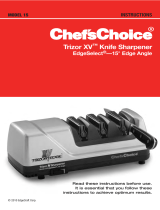 Chef’sChoice ChefsChoice 130 User manual
Chef’sChoice ChefsChoice 130 User manual
-
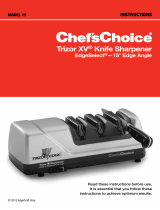 Chef’sChoice 0101500 User manual
Chef’sChoice 0101500 User manual
-
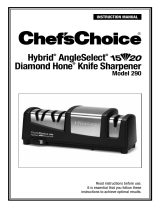 Chef’sChoice 0290101 User manual
Chef’sChoice 0290101 User manual
-
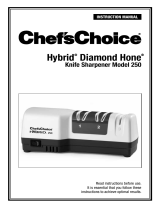 Chef’sChoice 250 User manual
Chef’sChoice 250 User manual
-
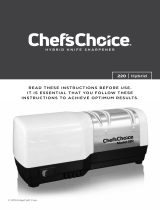 Chef’sChoice 220 User manual
Chef’sChoice 220 User manual
-
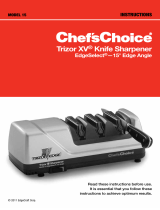 Edge Craft Trizor XV Instructions For Use Manual
Edge Craft Trizor XV Instructions For Use Manual
-
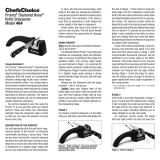 Chef’sChoice 4640100 User manual
Chef’sChoice 4640100 User manual
-
Edge Craft EdgeSelect 120 User manual
-
Chef's Choice EdgeSelect 120 Instructions Manual
-
Chef's Choice EdgeSelect 120 Instructions Manual
Other documents
-
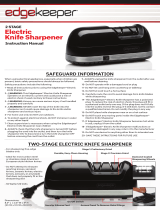 EdgeKeeper 5217645 User manual
EdgeKeeper 5217645 User manual
-
Sharper Image Professional Knife Sharpener Operating instructions
-
Galaxy Equipment 177KNIFESHRP User manual
-
Sharper Image Knife Sharpener User manual
-
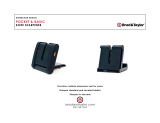 Brod & Taylor KS-535 User manual
Brod & Taylor KS-535 User manual
-
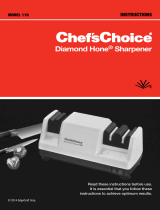 EdgeCraft Chef-s Choice 110 Owner's manual
EdgeCraft Chef-s Choice 110 Owner's manual
-
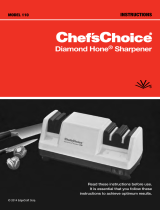 Edge Craft Chef'sChoice 110 Instructions Manual
Edge Craft Chef'sChoice 110 Instructions Manual
-
Legacy 0250100 User manual
-
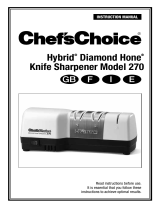 Chef’sChoice 0270100 User manual
Chef’sChoice 0270100 User manual
-
Chef-s Choice Chef s Choice EdgeCraft 320 DC Knife Sharpener User manual























